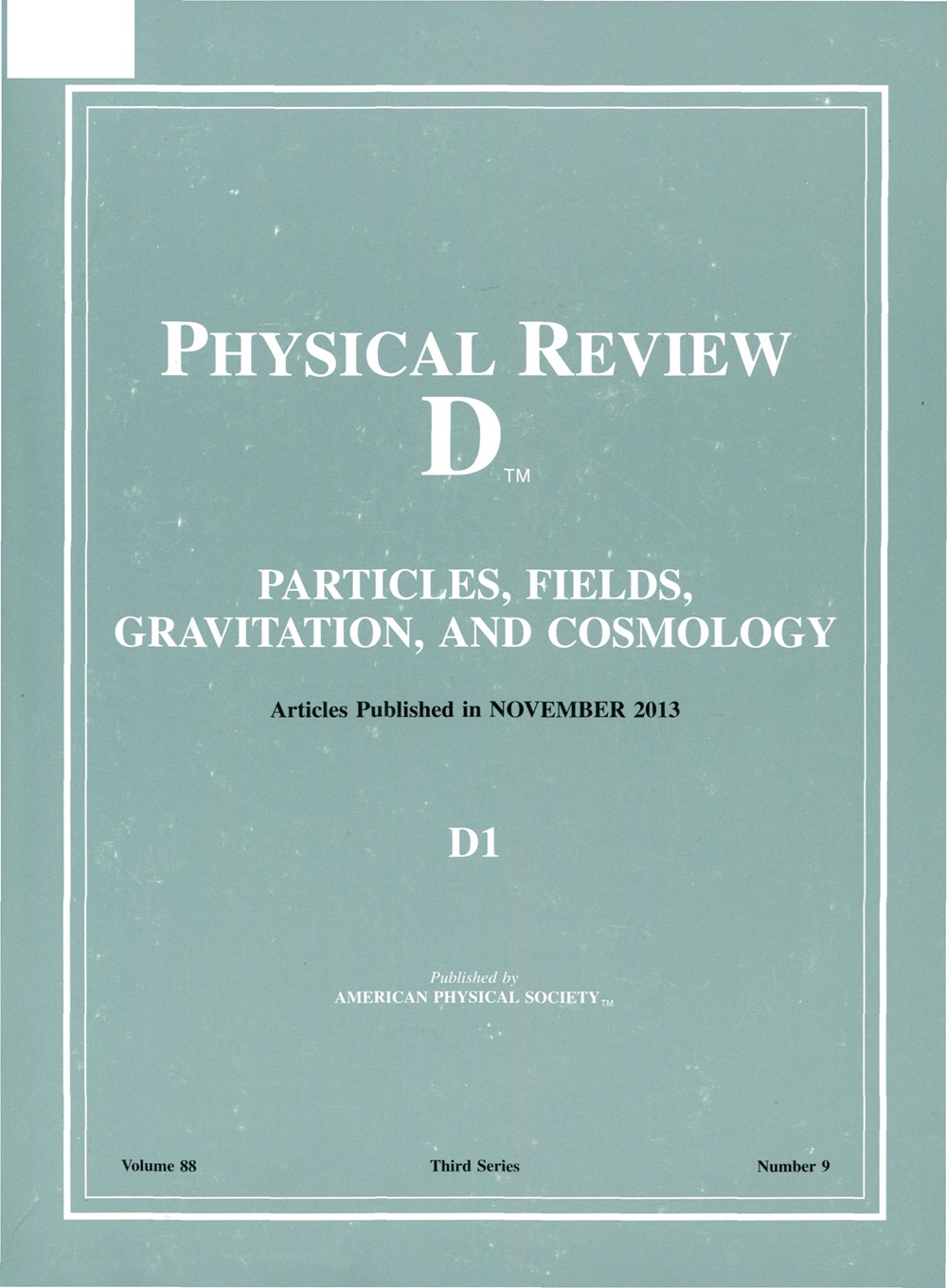Probing hidden topology with quantum detectors
IF 5.3
2区 物理与天体物理
Q1 Physics and Astronomy
引用次数: 0
Abstract
We consider the transition rate of a static Unruh-DeWitt detector in two (2+1)-dimensional black hole spacetimes that are isometric to the static Bañados-Teitelboim-Zanelli black hole outside the horizon but have no asymptotically locally anti–de Sitter exterior behind the horizon. The spacetimes are the用量子探测器探测隐藏拓扑
我们考虑了静态Unruh-DeWitt探测器在两个(2+1)维黑洞时空中的跃迁速率,这些时空与视界外的静态Bañados-Teitelboim-Zanelli黑洞等距,但视界后的外部没有渐近局部反de Sitter。时空是RP2 geon,空间拓扑为RP2\{点在无穷远},瑞典geon为Åminneborg .,空间拓扑为T2\{点在无穷远}。对于一个共形标量场,在反德西特覆盖空间上由全局真空诱导的哈特勒-霍金型状态下制备,我们用数值方法证明了探测器的跃迁速率区分了两个时空,特别是在外部时间的后期,我们将这一现象归因于由商构造打破的等距与通用覆盖空间的差异。我们的结果提供了一个例子,在这个例子中,黑洞外部的量子观察者可以获得关于黑洞内部拓扑的信息。2025年由美国物理学会出版
本文章由计算机程序翻译,如有差异,请以英文原文为准。
求助全文
约1分钟内获得全文
求助全文
来源期刊

Physical Review D
物理-天文与天体物理
CiteScore
9.20
自引率
36.00%
发文量
0
审稿时长
2 months
期刊介绍:
Physical Review D (PRD) is a leading journal in elementary particle physics, field theory, gravitation, and cosmology and is one of the top-cited journals in high-energy physics.
PRD covers experimental and theoretical results in all aspects of particle physics, field theory, gravitation and cosmology, including:
Particle physics experiments,
Electroweak interactions,
Strong interactions,
Lattice field theories, lattice QCD,
Beyond the standard model physics,
Phenomenological aspects of field theory, general methods,
Gravity, cosmology, cosmic rays,
Astrophysics and astroparticle physics,
General relativity,
Formal aspects of field theory, field theory in curved space,
String theory, quantum gravity, gauge/gravity duality.
 求助内容:
求助内容: 应助结果提醒方式:
应助结果提醒方式:


